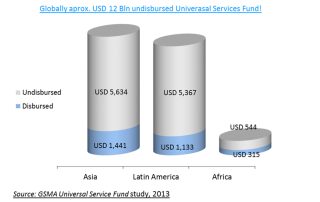January 2015
Utilization of Universal Service Funds
On 6th January 2015, Indian Regulator, TRAI, has finally recommended a reduction in Universal Service Obligation Fund (USOF) levy from 5% to 3% of the annual adjusted gross revenues. This has been done due to low level of utilization of collected funds. It notes that in ten years, out of the collected equivalent of US$…
Read More
